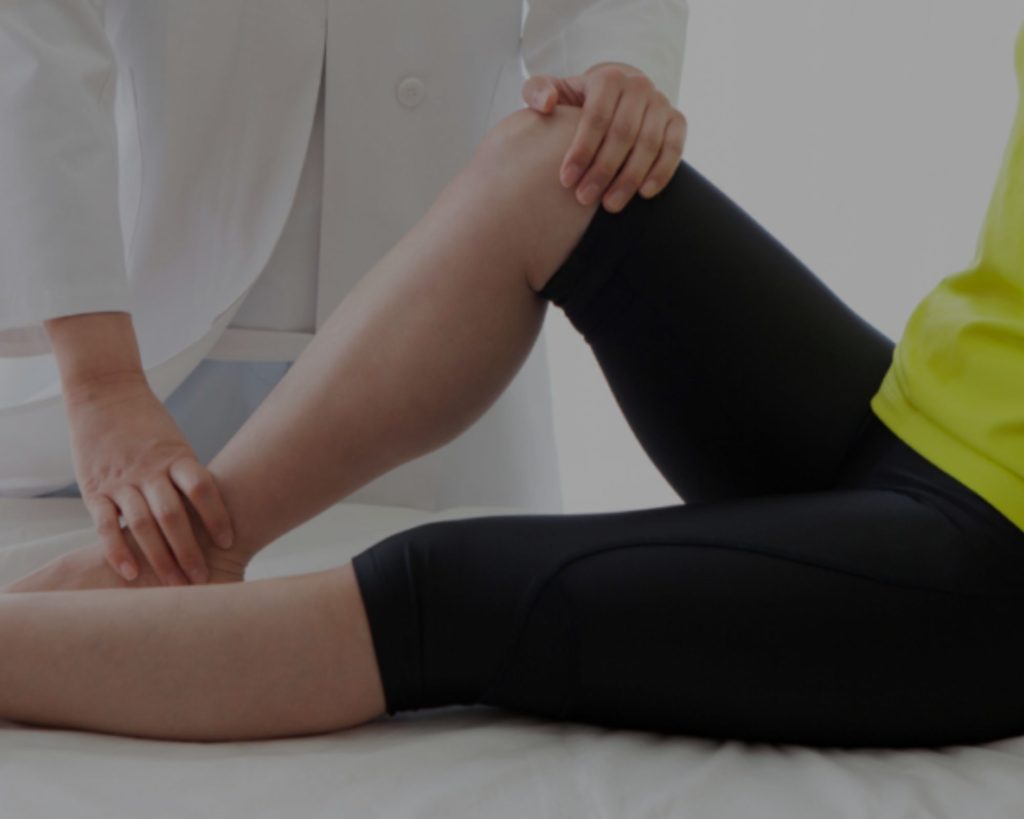
Knee pain is a common concern among fitness enthusiasts, often resulting from various factors such as overuse, injuries, or underlying conditions. Whether you’re an avid runner, weightlifter, or engage in other forms of physical activity, understanding the causes, symptoms, and treatment options for knee pain is crucial. We are going to delve into the intricacies of knee pain, exploring conditions like runner’s knee, pain behind the knee, jumper’s knee, knee injuries, knee pain treatment, and osteoarthritis knee. By the end, you’ll be armed with valuable insights to help prevent and manage knee pain effectively.
The Main Conditions of Knee Pain:
1-Runner’s Knee as The Main Condition of Knee Pain:
Runner’s knee, medically known as patellofemoral pain syndrome (PFPS), is a common condition affecting many fitness enthusiasts. It manifests as pain around the kneecap, often caused by improper tracking of the patella. Excessive running, poor running technique, or muscle imbalances are some factors that contribute to this condition. To prevent and manage runner’s knee, it is essential to focus on strengthening the quadriceps, hamstrings, and hip muscles, maintaining proper form during exercise, and wearing appropriate footwear.
2-Pain Behind the Knee: Unveiling the Causes:
Pain behind the knee can be debilitating and hinder your fitness goals. Several factors can contribute to this type of knee pain, including Baker’s cysts, hamstring injuries, popliteal tendinitis, and deep vein thrombosis (DVT). It is vital to consult a healthcare professional for an accurate diagnosis, as each condition requires specific treatment approaches. Applying ice, resting, and gentle stretching exercises are general recommendations for relieving pain behind the knee, but individualized treatment is necessary for long-term relief.
3-Jumper’s Knee: Understanding and Managing It:
Jumper’s knee, also known as patellar tendinopathy, is a common overuse injury among athletes involved in jumping activities. It is characterized by pain just below the kneecap and is caused by repetitive stress on the patellar tendon. Rest, ice, compression, and elevation (RICE) are initial treatment measures for jumper’s knee. Gradually incorporating eccentric strengthening exercises, physical therapy, and modifying training routines can help in long-term recovery and prevent future recurrences.
4-Knee Injuries: Common Culprits and Prevention Strategies:
Knee injuries can occur due to various reasons, such as ligament tears (ACL, PCL, MCL), meniscus tears, or fractures. These injuries often result from sudden twists, direct blows, or poor landing techniques. Engaging in proper warm-up exercises, maintaining a healthy weight, using protective gear, and focusing on strengthening exercises for the lower body can significantly reduce the risk of knee injuries during physical activities.
5-Osteoarthritis Knee: Managing Chronic Knee Pain:
Osteoarthritis knee is a degenerative condition that affects the knee joint, causing pain, stiffness, and limited mobility. While it primarily affects older individuals, it can also develop in younger individuals with a history of knee injuries or overuse. Managing osteoarthritis knee involves a multidimensional approach, including weight management, low-impact exercises, physical therapy, pain medications, and, in severe cases, surgical interventions such as knee replacement.
Effective Knee Pain Treatment Options:
When knee pain persists or worsens, seeking professional help is crucial. Treatment options may include physical therapy, nonsteroidal anti-inflammatory drugs (NSAIDs), corticosteroid injections, and, in severe cases, surgical intervention. Physical therapy plays a significant role in rehabilitating knee injuries, improving strength, flexibility, and joint stability. Additionally, alternative therapies like acupuncture, massage, and chiropractic care can complement traditional treatment methods and promote overall knee health.
Physical therapy for Knee Pain:
Physical therapy is a common treatment option for knee pain. It involves exercises and stretches designed to strengthen the muscles around the knee joint, improve range of motion, and reduce pain. Here are some ways in which physical therapy can benefit knee pain:
- Strengthening exercises: Strengthening exercises can help improve the stability of the knee joint by strengthening the muscles that support it. Stronger muscles can help reduce stress on the knee joint and improve overall knee function.
- Range of motion exercises: Range of motion exercises can help improve flexibility and mobility in the knee joint. These exercises can also help reduce stiffness and improve overall knee function.
- Low-impact exercises: Low-impact exercises such as cycling, swimming, and walking can help improve cardiovascular health and strengthen the muscles around the knee joint without putting excess stress on the joint.
- Manual therapy: Manual therapy techniques such as massage, joint mobilization, and stretching can help reduce pain and improve mobility in the knee joint.
- Education: Physical therapy can help educate patients about proper posture, body mechanics, and techniques for performing daily activities that can help reduce stress on the knee joint.
Physical therapy is a safe and effective treatment option for knee pain, and it can be used alone or in combination with other treatment options such as medications, injections, or surgery. A physical therapist can design an individualized treatment plan based on the specific needs and goals of each patient.
Specific Exercises You Can do for Knee Pain:
Specific exercises for knee pain can vary depending on the underlying condition causing the pain and the severity of the pain. However, here are some examples of exercises that are commonly used in physical therapy for knee pain:
- Straight leg raises: Lie on your back with one leg straight and the other bent. Lift the straight leg up to about hip height and hold for a few seconds, then lower it back down. Repeat for 10-15 repetitions, then switch legs.
- Wall squats: Stand with your back against a wall and your feet shoulder-width apart. Slowly lower yourself down into a squat position, keeping your back against the wall. Hold for a few seconds, then slowly rise back up. Repeat for 10-15 repetitions.
- Step ups: Step up onto a low step or platform with one foot, then step back down. Repeat for 10-15 repetitions, then switch legs.
- Hamstring curls: Lie face down on a mat with your legs straight. Bend one knee and bring your heel towards your buttocks, then lower it back down. Repeat for 10-15 repetitions, then switch legs.
- Calf raises: Stand with your feet shoulder-width apart and your hands on a stable surface for balance. Rise up onto your toes, then slowly lower back down. Repeat for 10-15 repetitions.
It is important to consult with a healthcare professional or physical therapist before starting any new exercise program, especially if you have knee pain or a knee injury. A physical therapist can design an individualized exercise program based on your specific needs and goals.
Corticosteroid Injections: Benefits and Side Effects!
Corticosteroid injections are a common treatment option for knee pain, arthritis, bursitis, and other inflammatory conditions. They work by reducing inflammation and swelling in the affected area. Like any medical treatment, corticosteroid injections come with both benefits and risks. Here are some of the potential benefits and risks of corticosteroid injections:
Benefits:
- Reduces inflammation and pain: Corticosteroid injections can provide quick relief from inflammation and pain in the affected area.
- Non-surgical treatment: Corticosteroid injections are a non-surgical treatment option for conditions such as arthritis, bursitis, and tendinitis.
- High success rate: Corticosteroid injections have a high success rate in reducing inflammation and pain in the affected area.
Risks:
- Temporary increase in pain: Some people may experience a temporary increase in pain and inflammation after receiving a corticosteroid injection.
- Tissue damage: Repeated corticosteroid injections can weaken or damage the tissues in the affected area.
- Infection: There is a small risk of infection at the injection site.
- Joint damage: Corticosteroid injections can lead to joint damage over time, especially if used frequently or in high doses.
- Bone loss: Long-term use of corticosteroids can lead to bone loss and osteoporosis.
It is important to discuss the potential benefits and risks of corticosteroid injections with a healthcare professional before deciding if it is the right treatment option for your specific condition and situation.
Alternative Therapies for Knee Pain:
Alternative therapies such as acupuncture, massage, and chiropractic care can complement traditional treatment methods for knee pain and promote overall knee health. These therapies can help reduce pain, improve mobility, and enhance the body’s natural healing process. Here are some ways in which these alternative therapies can benefit knee health:
- Acupuncture: Acupuncture involves the insertion of thin needles into specific points on the body to stimulate the nervous system and promote healing. Acupuncture has been shown to reduce knee pain and improve mobility in people with knee osteoarthritis.
- Massage: Massage therapy can help reduce muscle tension and improve circulation in the affected area. Massage can also help reduce pain and improve range of motion in the knee joint.
- Chiropractic care: Chiropractic care involves the manipulation of the spine and other joints to improve alignment and reduce pain. Chiropractic care can help reduce knee pain and improve mobility by addressing issues in the musculoskeletal system that may be contributing to knee pain.
It is important to note that alternative therapies should not be used as a substitute for traditional medical treatment. Before trying any alternative therapy, it is important to consult with a healthcare professional to ensure that it is safe and appropriate for your specific condition and situation.
Conclusion:
As a fitness enthusiast, understanding the causes, symptoms, and treatment options for knee pain is crucial for your overall well-being and continued participation in physical activities. Whether you’re dealing with runner’s knee, pain behind the knee, jumper’s knee, knee injuries, osteoarthritis knee, or knee pain treatment, early intervention and appropriate management strategies can help you overcome these challenges. By adopting preventive measures, seeking timely medical attention, and following tailored treatment plans, you can alleviate knee pain, promote recovery, and maintain an active and fulfilling lifestyle.
Remember, if knee pain persists or worsens, it is always recommended to consult with a qualified healthcare professional for an accurate diagnosis and personalized treatment plan.




